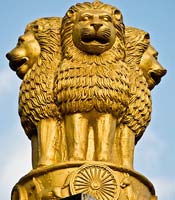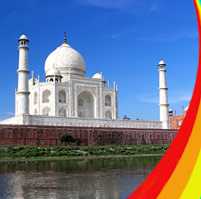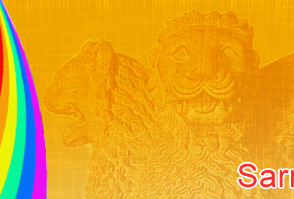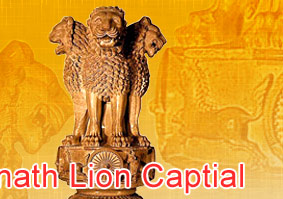Ashoka built the Sarnath pillar to commemorate the site of the first preaching of Lord Buddha, where he taught the Dharma to five monks. Even though the pillar is still in its original location, the Ashoka Lion Capital has been shifted to the Sarnath Museum for better preservation. The Lion Capital of Ashoka comprises four lions, standing back to back, mounted on a cylindrical abacus. The abacus features the sculptures of an elephant, a galloping horse, a bull, and a lion, separated by intervening 24-spoked Dharma wheels over a bell-shaped lotus.
 The Sarnath Lion Capital is replete with symbolism inspired by Lord
Buddha's life. The four animals in the Sarnath capital are believed to
symbolize different phases in Lord Buddha's life. The Elephant is a
representation of Queen Maya's conception of Buddha when she saw a white
elephant entering her womb in dream. The Bull represents desire during
the life of the Buddha as a prince. The Horse symbolizes Buddha's
departure from palatial life while the Lion represents the attainment of
Nirvana by Lord Buddha.
The Sarnath Lion Capital is replete with symbolism inspired by Lord
Buddha's life. The four animals in the Sarnath capital are believed to
symbolize different phases in Lord Buddha's life. The Elephant is a
representation of Queen Maya's conception of Buddha when she saw a white
elephant entering her womb in dream. The Bull represents desire during
the life of the Buddha as a prince. The Horse symbolizes Buddha's
departure from palatial life while the Lion represents the attainment of
Nirvana by Lord Buddha.Lion Capital of Ashoka: The National Emblem of India
The National Emblem of India is an adapted version of the Lion Capital of Ashoka at Sarnath. The Government of India adopted the Emblem on January 26, 1950. The original Ashoka Lion Capital comprises four lions, standing back to back, mounted on a cylindrical abacus. The abacus features the sculptures of an elephant, a galloping horse, a bull, and a lion, separated by 24-spoked Dharma wheels over a bell-shaped lotus.









